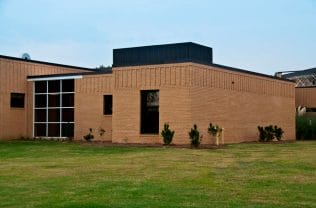
By Todd Hastings
Saving lives leaves little time for doctors and nurses to think about responsibilities outside their line of duty, but decisions made by others often have a tremendous impact on their work. For instance, the size of a hospital emergency room is the duty of the organization’s facility manager. However, the environment in which doctors and nurses practice medicine is crucial to their ability to do their job.
Many health care organizations need more space. But they’re putting off expansions because they believe their budget won’t allow for it. The reality is that in today’s economy, the needs of patients can be met even in cash-constrained organizations.
The more doctors and nurses know about the latest innovations in medical facility expansions, the better they can support the facility managers and architects in developing these spaces to suit their needs and those of patients. One solution they should be aware of is modular construction.
Modular construction can cut construction costs by up to 20 percent and get buildings up and running up to 50 percent faster. And it can do this while still providing state-of-the-art medical facilities.
Modular construction uses modern, prefabricated materials that can be specially designed to either match the rest of a hospital or create a new design that supports a specific need. Also, they use the toughest steel.
Modular facilities look and operate like their traditionally built counterparts. What differentiates modular from traditional construction is that modular buildings are built in factories, not onsite.
This process allows a builder to focus on site preparation while the building is constructed in a separate location. This simultaneous approach accelerated the project timeline and overall savings for the building process.
Plus factory-built buildings provide high-quality permanent solutions for any space need. They offer faster design-build process, simultaneous site and building work, greater quality control, minimized site disruption, maximized material resources, and more.
The end result is a superior, quality-controlled product that can help meet and exceed project schedules. This allows for faster occupancy of the medical facility, which in turn provides faster revenue generation and return on investment for the organization.
Modular medical facilities include operating room additions, ambulatory care and physician offices, emergency room expansions, sleep centers, emergency departments, hyperbaric wound care facilities, community clinics, diagnostic imaging facilities (MRI, CT, PET/CT), mental health and psychiatric clinics, and dialysis treatment centers.
A prime example is a project completed in Lansdale, Pa. The hospital needed to build a dialysis and cardiac addition that would also accommodate laboratory space and staff facilities. They contacted MedBuild®, the specialized health care division of one of North America’s largest modular building providers, ModSpace®. Together, they designed a dual clinic permanent addition in a timely fashion to allow patients to begin receiving treatment as quickly as possible.
The clinic included 16 dialysis stations, a lab area, nurse and doctor offices, nutrition room, and a lounge/conference area. A handicap accessible bath, soiled utility room, filter system room (housing a water-treatment system), equipment work room (with state-of-the-art fume hood), and tank storage rooms completed the design.
The cardiac rehabilitation portion of the design included increased floor loads in order to accommodate the installation of extensive exercise equipment. The complete addition has an integrated fire, security, and phone system, as well as Medintech seamless flooring in all patient areas.
A site-built corridor connects the addition to the existing hospital seamlessly. The addition was 12,000 square feet and took just 105 days to complete.
The modular design allowed the customer to move in on a compressed time schedule: The hemodialysis portion had most of the finishing performed at the factory, while the cardiac rehab portion was fitted on site. The building is as permanent as any conventional construction they originally considered. The occupants of the building are very pleased, as are the patients being treated.
Health care organizations don’t have to be constrained in this economy. Whether it’s a permanent addition to a hospital or a temporary clinic, doctors and nurses can support facility managers and architects who choose to use modular construction. Because when it comes providing a better standard of care, modular construction can give doctors and nurses a place to treat patients and keep their community healthy.
Todd Hastings is a Clinical Buildings Specialist for MedBuild. For more information, visit www.modspace.com or www.medbuild.com. .
Throughout the year, our writers feature fresh, in-depth, and relevant information for our audience of 40,000+ healthcare leaders and professionals. As a healthcare business publication, we cover and cherish our relationship with the entire health care industry including administrators, nurses, physicians, physical therapists, pharmacists, and more. We cover a broad spectrum from hospitals to medical offices to outpatient services to eye surgery centers to university settings. We focus on rehabilitation, nursing homes, home care, hospice as well as men’s health, women’s heath, and pediatrics.








This is a good lot of information about constructions, especially in emergency.
In order to create low cost and energy efficient buildings, construction trends are now focusing on prefabricated structures. Building Systems offer many solutions utilising off site construction methods to produce components, prefabricated elements or complete buildings for a wide variety of building types and uses of both a temporary or permanent nature.